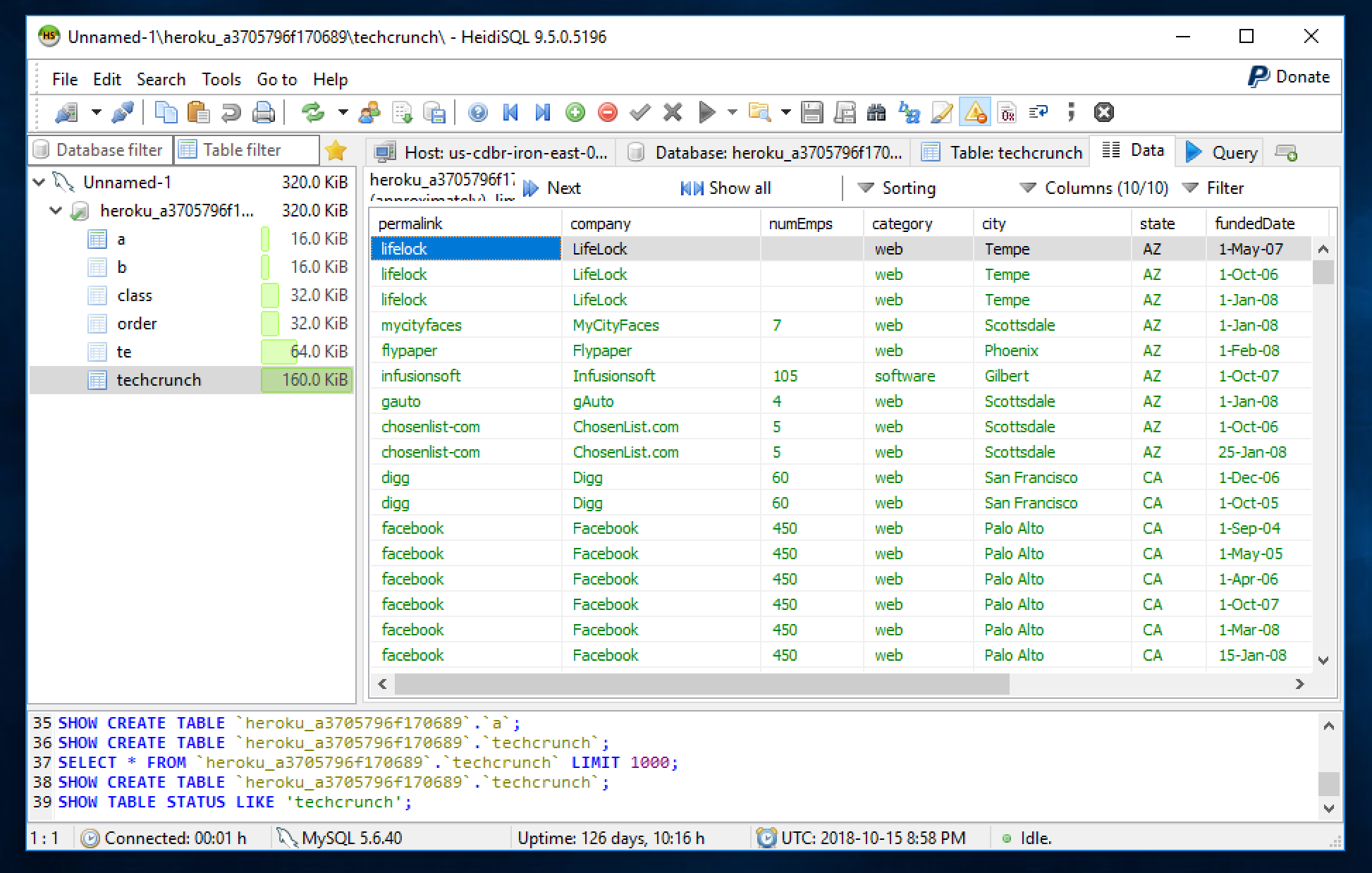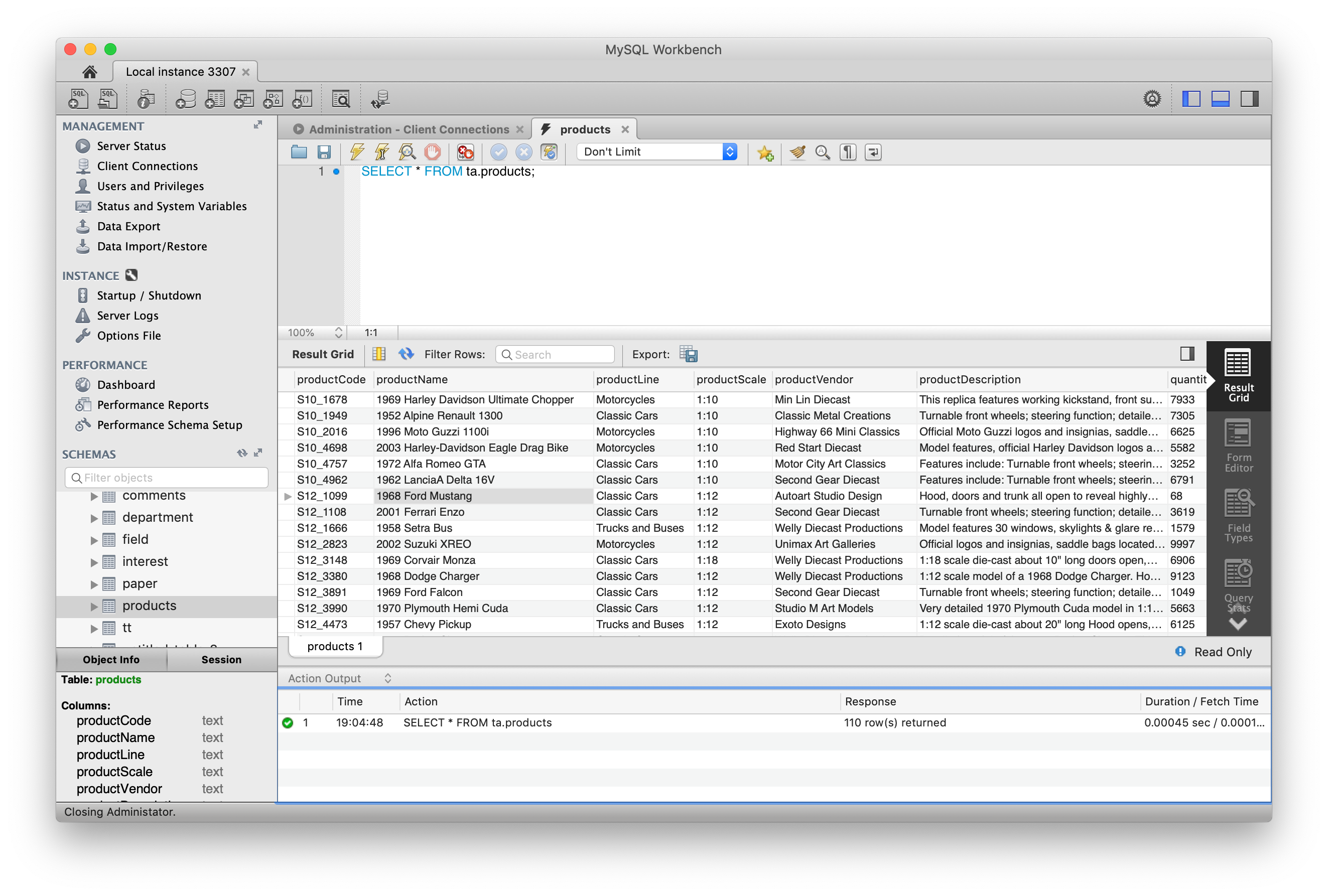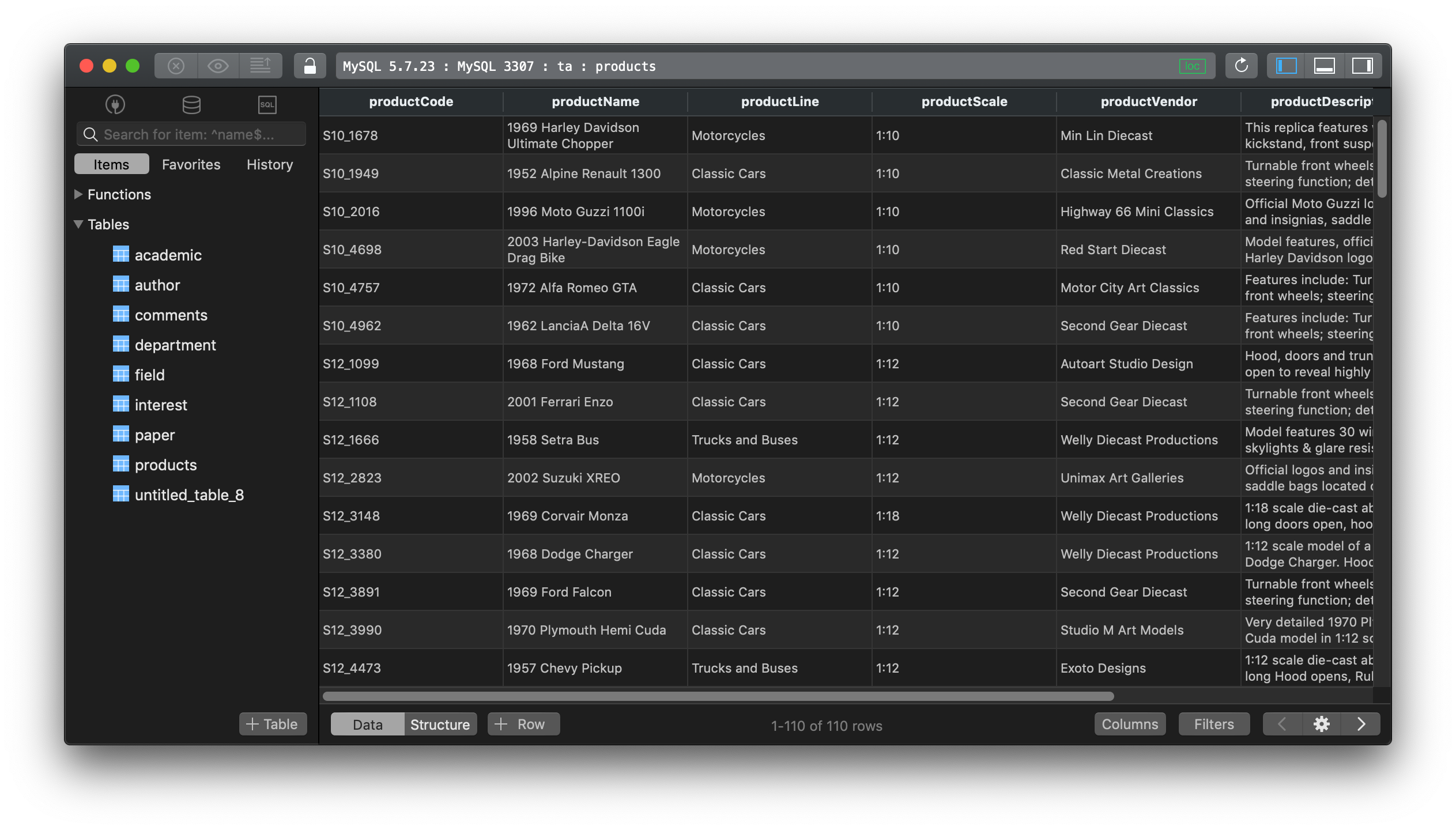HeidiSQL vs MySQL Workbench vs TablePlus - A quick review
In this post, we are going to have a quick review for three SQL clients: HeidiSQL, MySQL Workbench, and TablePlus; and compare pros and cons of each tool to see which one is better for your needs.
1. HeidiSQL
HeidiSQL provides a powerful graphical interface for managing tables, logs, and users of a MySQL database, as well as Microsoft SQL Server and PostgreSQL.
-
Supported Platforms: HeidiSQL was built for the Windows platform, and it only works on Windows.
-
Supported Drivers: Initially, HeidiSQL offered support for MySQL, then extended to MS SQL Server, and now it also includes PostgreSQL support.
-
Pricing: HeidiSQL is a free and open-source client. Its codebase was originally taken from Ansgar Becker’s own MySQL-Front 2.5 software. Anyone can download and use the app for free with no limitation, but it also accepts the donation.

Pros:
- It’s lightweight.
- Connect to multiple servers in one window
- Free to use – Licensed under GNU GPL.
- Portable. Alongside the possibility of downloading the installer and source code, a portable version of the software is available.
- Full database user management and privileges management options.
- Write queries with customizable syntax-highlighting and code-completion
- Data synchronization. HeidiSQL can compare and synchronize your data and structure between local and remote databases.
- SSH tunneling support
Cons:
- Low stability. HeidiSQL is known to have a lot of bugs that result in frequent crashes
- It’s only available for Windows and it doesn’t look like a cross-platform is coming anytime soon
- No built-in debugger included
- Low DPI display. The author attempted to add the high DPI but dropped it eventually.
2. MySQL Workbench
MySQL WorkBench offers a full-featured administration tool for MySQL on multiple operating systems.
-
Supported platforms: MySQL Workbench is cross-platform. From can find its versions for Mac, Windows, and Linux.
-
Supported Drivers: As the name states it, MySQL Workbench only works with MySQL.
-
Pricing: MySQL Workbench also has a community version which is free and open source. The other two commercial versions for enterprises are subscription based with enterprise features and support.

Pros:
- It’s cross-platform.
- It includes everything a data modeler needs for creating complex ER models
- It has a Visual Performance Dashboard
- A complete and easy to use tool for database migration.
- It provides fast access to server status and other information.
Cons:
- It only supports MySQL and MariaDB. If you work with more database other than MySQL and MariaDB, it’s a huge limitation.
- It complicated and overkill to perform simple tasks.
- It’s resource intensive.
- It crashes a lot too.
3. TablePlus
With a native build and a lightweight size, TablePlus is a very handy tool for managing multiple databases.
-
Supported platforms: TablePlus is built native for each platform. It started out with a native version for Mac, then another version for Windows, and a version for Linux was introduced recently as an alpha release. It also has an iOS version.
-
Supported Drivers: TablePlus supports a handful of relational databases: MySQL, PostgreSQL, SQLite, Microsoft SQL Server, Amazon Redshift, MariaDB, CockroachDB, Vertica, Oracle; and two popular NoSQL databases: Cassandra and Redis.
-
Pricing: TablePlus has a free version with full set of features which you can download and use forever, but there are some usage limitations. If you use it heavily, the license costs $59 to remove all those limitations.

Pros:
- Native build for each platform so it’s fast, lightweight, and stable.
- Clean and simple interface.
- Multiple drivers support
- Multiple conditions data filter
- Queries history and keyword binding favorite.
- Streaming results and async loading to show queries results faster and doesn’t block the UI.
- Very quick inline editing for table data and structure, you also can edit query results directly.
- Smart query editor with highlight syntax, instant autocomplete, SQL reformat.
- A plugin system to extend the app.
- Quick support. TablePlus releases new updates regularly and responds to users’ requests almost immediately.
Cons:
It currently lacks of some advanced features such as ER Diagram, database compare tool to Diff and Sync, etc.
4. Conclusion
For those who need a full-featured tool, you can either choose HeidiSQL or MySQL Workbench. Since TablePlus is relatively new, there might be some advanced features that are missing there. It also does not focus on adding more features but on usability and making features awesome & unique.
If you need a tool that gets the job done for MySQL, you should stick with MySQL Workbench as you can find almost any MySQL features in it. If you get to work with multiple databases, TablePlus is good to go as you only need to install it once and never have to worry about finding tool for another database in the next project you’ll be working on.
If you want modern & better UX, go with TablePlus. As HeidiSQL has been around for around 20 years now and its design hasn’t been changed much, it feels a bit old-fashioned with loads of buttons in the UI. So for some people who prefer the design that shows every function upfront, HeidiSQL is good to go, but for those others who want a minimal, clean design, HeidiSQL’s interface can be overwhelming, and TablePlus trumps this.
Another major benefit you can get from TablePlus is the very fast response to issues and short development cycle. If anything goes wrong and the team is aware of it, it’s gonna get fixed in no time.